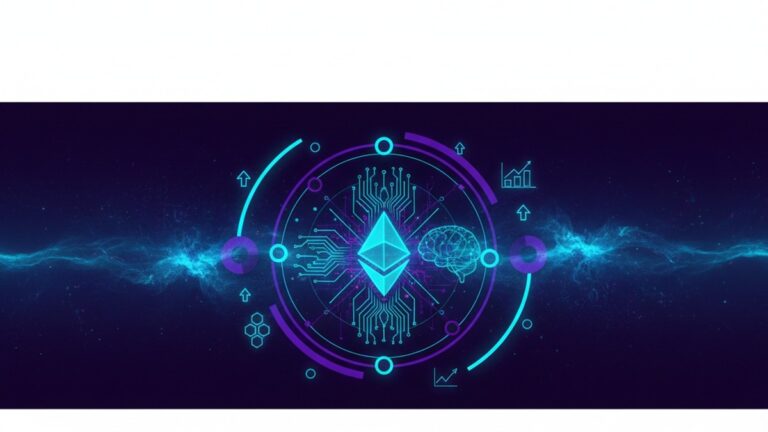In a surprising pivot that’s got the crypto community talking, the Ethereum Foundation has announced a new AI initiative, led by Davide Crapis. The move was not originally part of Ethereum’s roadmap but emerged from a groundswell of grassroots demand within the ecosystem. This development could mark a significant turning point for Ethereum, as it integrates artificial intelligence into its robust blockchain network.
A Grassroots Push for AI
According to Crapis, the decision to form an AI team within the Ethereum Foundation wasn’t top-down. It was, in fact, the result of a growing call from developers, users, and stakeholders who saw the potential for AI to enhance Ethereum’s capabilities. “We started hearing more and more from the community about how AI could solve real problems in the blockchain space,” Crapis explained in a recent interview. “It became clear that there was a genuine need and enthusiasm for this kind of innovation.”
It’s an interesting twist for Ethereum, which has long been at the forefront of blockchain development. Known for its decentralized applications and smart contract functionality, Ethereum has now opened a new chapter by delving into the world of artificial intelligence. Crapis believes that the synergy between AI and blockchain could lead to unprecedented advancements. “Imagine smart contracts that can learn from past transactions and optimize themselves,” he suggested, painting a picture of what the future might hold.
Bridging Two Worlds
The integration of AI into Ethereum’s ecosystem isn’t just about innovation for innovation’s sake. It represents a strategic effort to bridge two powerful technologies, each with its own set of strengths and challenges. Blockchain technology provides transparency, security, and decentralization, while AI offers data processing, prediction, and adaptability. By combining these fields, Ethereum aims to create a more efficient and intelligent platform.
However, the path to this integration isn’t without its hurdles. Critics argue that introducing AI into blockchain could complicate the already intricate systems and increase the risk of vulnerabilities. Crapis acknowledges these concerns but remains optimistic. “Every new venture comes with challenges, but the potential benefits far outweigh the risks. We’re committed to addressing these challenges head-on,” he stated.
Real-World Applications
One of the driving forces behind the AI push is the multitude of potential real-world applications. From decentralized finance (DeFi) to supply chain management, AI could revolutionize how blockchain is utilized across various sectors. For example, in DeFi, AI algorithms could analyze market trends and execute trades with greater accuracy and speed than human operators. In supply chains, AI could enhance transparency and efficiency by predicting demand and optimizing logistics.
Moreover, the use of AI in smart contracts could pave the way for more sophisticated and autonomous agreements. These contracts could adapt to new information, making them not only self-executing but also self-improving. Such advancements could significantly reduce transaction costs and increase trust among parties, potentially attracting more users to the Ethereum network.
Balancing Innovation and Ethics
While the prospects are exciting, the integration of AI into Ethereum also raises important ethical considerations. The use of AI in decision-making processes, particularly in financial transactions, necessitates a robust framework to ensure fairness and prevent biases. Crapis emphasized the foundation’s commitment to ethical AI development. “We’re not just looking at what AI can do, but also at how it should be done. Ethical considerations are at the forefront of our efforts,” he noted.
This ethical stance is vital as Ethereum’s reach continues to expand, influencing more sectors and impacting more lives. By prioritizing ethical guidelines, Ethereum aims to set a standard for responsible AI integration in the blockchain industry.
The Road Ahead
Looking forward, the Ethereum Foundation’s AI initiative is poised to play a crucial role in the platform’s evolution. Crapis and his team are already hard at work developing tools and frameworks to support this integration. They’re also engaging with the broader community to ensure that the AI push aligns with user needs and expectations.
The foundation plans to host a series of workshops and hackathons in the coming months to foster collaboration and innovation within the community. These events will provide a platform for developers and enthusiasts to explore new ideas and contribute to the AI initiative’s growth.
Conclusion
Ethereum’s unexpected turn towards AI underlines the dynamic nature of the blockchain industry, where innovation is driven by community demand and the relentless pursuit of progress. As the lines between blockchain and AI continue to blur, the Ethereum Foundation’s new initiative could set a precedent for how these technologies can coexist and complement each other.
While challenges remain, the potential rewards promise to be transformative. Ethereum’s foray into AI is not just a technical evolution but a step towards a more intelligent, efficient, and inclusive blockchain ecosystem. As Crapis and his team navigate this new frontier, the world watches with keen interest, eager to see what this marriage of technologies will bring.

Steve Gregory is a lawyer in the United States who specializes in licensing for cryptocurrency companies and products. Steve began his career as an attorney in 2015 but made the switch to working in cryptocurrency full time shortly after joining the original team at Gemini Trust Company, an early cryptocurrency exchange based in New York City. Steve then joined CEX.io and was able to launch their regulated US-based cryptocurrency. Steve then went on to become the CEO at currency.com when he ran for four years and was able to lead currency.com to being fully acquired in 2025.


